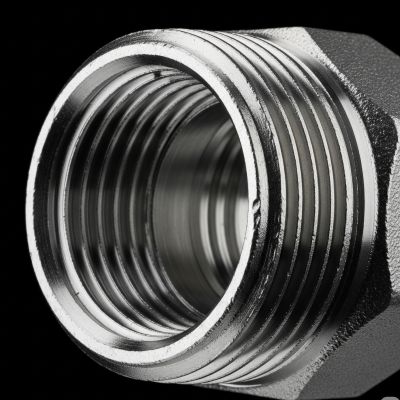When working with piping systems—whether for fuel, gas, or water—understanding the types of threads used for connections is essential for safety, compatibility, and efficiency. One such thread type commonly encountered is the FPT thread. But what exactly does FPT mean, and how does it fit into the broader world of pipe fittings?
In this quick guide, we’ll break down what FPT threads are, how they differ from other types of pipe threads, and where they’re commonly used.
What Does FPT Stand For?
FPT stands for Female Pipe Thread. It’s a general term used to describe internal (female) threads that match up with MPT (Male Pipe Thread) fittings. FPT threads are most commonly found in plumbing, gas, and fuel systems where secure, threaded pipe connections are required.
Note: FPT is often used interchangeably with NPTF (National Pipe Taper Fuel) or simply NPT (National Pipe Thread), depending on the context. This is where confusion often arises.
Tapered vs. Straight Threads
FPT threads typically follow the NPT (National Pipe Taper) standard, which means they are tapered—the threads become narrower as they go deeper. This taper allows for a tighter seal as the male and female threads are joined, often with the help of a thread sealant or Teflon tape.
This is different from straight threads like NPS (National Pipe Straight), which do not taper and usually require an O-ring or gasket to seal.
Key Characteristics of FPT Threads
1. Internal threads: Designed to accept MPT (Male Pipe Thread) fittings
2. Tapered design: Creates a seal through metal-to-metal wedging
3. Used for pressure systems: Ideal for fuel, gas, and hydraulic lines
4. Follows ANSI/ASME B1.20.1 standards (in the U.S.)
Common Applications of FPT Threads
FPT threads are widely used in systems where leak-proof connections are crucial, such as:
➡️ Fuel piping systems (gasoline, diesel, propane)
➡️ Compressed air lines
➡️ Water supply lines
➡️ Industrial piping systems
➡️ Hydraulic and pneumatic setups
Because of their reliable sealing capabilities, FPT threads are preferred in many pressurized systems.
FPT vs. NPT vs. NPTF – What’s the Difference?
It’s easy to confuse FPT with other thread types, especially NPT and NPTF. Here’s a quick comparison:
|
Thread Type |
Meaning |
Tapered? |
Seal Type |
|
FPT |
Female Pipe Thread |
Yes |
Tapered, with sealant |
|
NPT |
National Pipe Tapered |
Yes |
Requires sealant |
|
NPTF |
National Pipe Taper Fuel |
Yes |
Dry-seal, no sealant required |
FPT generally refers to a female NPT thread, but when precision is needed—especially in fuel systems, NPTF fittings may be used for their dry-seal capability.
Tips for Working with FPT Threads
1. Use thread sealant: Always apply Teflon tape or thread compound unless using NPTF dry-seal fittings.
2. Don’t over-tighten: Over-torquing can damage the threads or distort the fitting.
3. Check compatibility: Ensure you’re mating FPT with MPT fittings of the same thread standard (e.g., NPT to NPT).
Final Thoughts
FPT threads play a critical role in ensuring leak-proof, secure connections in fuel and fluid systems. While often used interchangeably with NPT, it’s important to understand that FPT refers specifically to the female end of a tapered pipe thread connection. Knowing the difference can help you avoid mismatched fittings and potential leaks in your systems.
Whether you’re a professional mechanic, an HVAC technician, or a DIY enthusiast, understanding FPT threads is essential for building safe and reliable piping systems.
Post time: Jul-04-2025


